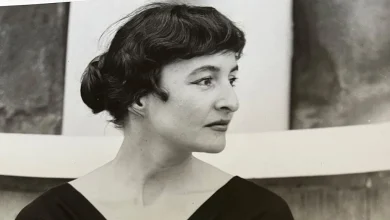The maid who colored the history of comedy
In 1900, French novelist Octave Mirbeau published a novel that became a classic of daring, even erotic, literature, entitled “Memoirs of a Maid” (Journal d’une femme de chambre). The novel gained widespread fame thanks to its adaptation for the stage and cinema, and even before that, when Mirbeau began publishing a serialized version in newspapers in 1891 and 1892.
However, what truly immortalized the novel in Western culture was its numerous film adaptations in many Western countries. Two films, each starring a dazzling international star, have become particularly memorable: the first is the film “La Chambre en rose” (The Diary of a Chambermaid) by the great French director Jean Renoir, although the film is American and in English. The film was released in 1946 and starred Paulette Goddard, who was once married to the giant Charlie Chaplin.
The second film was released under the same title in 1964. It is a French film in French, directed by the great Spanish surrealist director Luis Buñuel and starring Jeanne Moreau.
***
This triangle: the novel “The Diary of a Chambermaid” and the films by Renoir and Buñuel based on it, occupies an important place on the margins of high culture, on the fringes of mainstream Western culture.
But what many people don’t know is that these two films may have been the source of two of the most important scenes in classic Arabic comedy. The two films may have played a small role, but they had a huge impact on the adaptation of comedy to the Egyptian cinema in particular. I would argue that the two films influenced the films Ghazal al-Banat (Girls’ Flirting), directed by Anwar Wajdi in 1949, and Matarada Ghramia (Romantic Pursuit), directed by Najdi Hafez in 1968.
The romantic pursuit of shoes
I do not refer to documents or testimonies proving the source from which the makers of “Matarada Gharamiya” drew the idea of Fouad Al-Mohandes’ fascination with women’s shoes and his falling in love with a pair of shoes before falling in love with the woman who wore them. His line still rings true: “Allow me, madam, to compliment you on the beauty of your shoes” still rings in the minds of millions of fans of classic black-and-white comedy, which to many seems to come from the heart of 1960s Egyptian culture.
But it seems to me that the idea is loosely based on an important motif in Buñuel’s film The Discreet Charm of the Bourgeoisie, which was released in 1964, four years before The Pétanque Game.
In Buñuel’s film, there are several scenes that highlight the attraction of the lady of the house’s father to women’s shoes and boots, showing that the colors, texture, and smell of the shoes arouse the old man. The father has a shoe cabinet filled to the brim with rows of women’s shoes. A few hours after the arrival of the Parisian maid, Jeanne Moreau, the old man begins to flirt with her and shower her with praise and compliments. Soon, the maid sees his collection of shoes, and he shows her the ones that are closest to his heart, asking her to wear a particular pair that he likes.

In the French film, the scenes repeat themselves based on the same event: the old man asks the maid to wear a certain pair of shoes, to strut around in them, or to read him a book he has chosen while wearing the shoes that excite him. Interestingly, this dramatic plot line is found in the original French novel and was not added by Buñuel, who was known for depicting sexual deviance in his films.
These situations and the old man’s personality traits are similar to those that emerge in Fouad Al-Mohandes’ character in “Matarada Gharamiya” (Romantic Pursuit). Al-Mohandes, in Najdi Hafez’s novel, is like the old man in Buñuel’s film: he is obsessed with shoes, and both feel emotional excitement when the leather of the shoe touches a woman’s skin. But in Buñuel’s work, the arousal is sexual, while in Najdi Hafiz’s work, it seems romantic and strange. The comedic exaggeration, the innocence of the buffoonery, and the performance of the knight conceal the fetishistic (or fetishistic) sexual aspect of the engineer’s character.
The feeling of sexual arousal when one focuses one’s energy on an object, such as a shoe, is what psychology calls fetishism, which is the scientific description of the engineer’s behavior in the film.
***
However, “The Chase” does not present this deviation in sexual taste as an insult or disparagement of either women or Fouad Al-Mohandes, but rather as a strange taste that provokes surprise and smiles and invites teasing.
In Buñuel’s film, the obsession with shoes is one of several deviations presented in the film, such as the husband’s pursuit of the maids and his seduction of them, or the butler’s rape of a girl whose father is away. Buñuel uses these deviations and crimes to express the class violence practiced by the ruling classes and the owners of wealth (agricultural in this context) and suffered by the working class of servants and laborers working on the lands of large agricultural landowners.
Deviations, differences, and exaggerations
As was typical of 1960s comedies, which tended toward exaggeration and repetition, the film “Matar” exaggerates Fouad al-Mohandes’ admiration for women’s shoes. He appears mesmerized, unable to control himself when aroused by a woman’s shoes. Meanwhile, the father of the lady of the house keeps his composure perfectly in Buñuel’s “Diary of a Chambermaid.” The Egyptian film also exaggerates the number of women’s shoes owned by Fouad Al-Mohandes, which is at least twice the number of women’s shoes kept by the old French man in his private collection.
But in both films, the idolatrous obsession with shoes causes a major crisis for the deviant character. In the French film, the old man meets his death while embracing a shoe imbued with the scent of the maid, because she had been wearing it. The servants find the old man dead, naked, in a position that represents a moral scandal. In the Egyptian film, shoes are a major obstacle to the development of a true love relationship between air traffic controller Fouad Al-Mohandes and flight attendant Shwikar.
***
Here, shoes are a metaphor for the multiple unhealthy relationships in which Fouad Al-Mohandes was immersed. When Al-Muhandis decides to get rid of those shoes and throw them in the street, this action confirms the moment when the hero abandons his life of debauchery, signaling his intention to turn over a new leaf and build a serious relationship with Shuqair alone. In a sense, then, the obsession with shoes plays a more complex, sophisticated, and transformative role in the script of “A Romantic Pursuit” than it does in Buñuel’s “The Diary of a Chambermaid.”

The Gardener who owns the property
The American film directed by Jean Renoir in 1946, based on the same novel, “The Diary of a Chambermaid,” has, in my opinion, a possible influence on a scene in another classic of Arab comedy cinema, “Ghazal Banat” (Girls’ Flirting), directed by Anwar Wajdi and starring Naguib Al-Rihani. I repeat that I am not relying on documents to support my view, but I note the striking similarity between the basic idea in two scenes, one in Renoir’s film, which appeared in 1946, and one in Anwar Wajdi’s film, which was released three years after the American film, in 1949.
In Renoir’s film, the husband of the lady of the house is close to the servants and is relatively informal with them, even sometimes having a drink with them in the kitchen. Renoir’s film begins like Buñuel’s: a maid arrives in a small French town and is driven by the butler in his carriage to the house of the wealthy landowners who have hired her. The maid begins to get to know the other servants. In one scene, she enters the kitchen, where the servants are engaged in conversation in this space reserved almost exclusively for them and their social class.
But suddenly, the lady of the house returns from a tour of her estate and joins the servants in the kitchen. The husband is the master of the house, but he is simple and modest and loves to work in the gardens of his estate. He has just arrived from the garden after a session of work among the trees and flowers. He sits down with the servants to have a glass of wine with them. The maid, Paulette Godard, thinks he is a gardener and does not realize that he is the master of the house.
***
The maid strikes up a conversation with the gentleman, thinking he is the gardener, and tells him that she will not allow the masters of the house to be arrogant towards her or give her too many orders.When the master points out that not all the masters of the estate are unpleasant, the maid replies that he is the gardener and therefore does not have much contact with the masters during the day, implying that his work does not allow him to judge their character based on their daily interactions with the servants.
But as the conversation between the maid and the master develops and takes this turn, the older maid begins to point to the maid who has just arrived, Paulette Godard. Finally, the older maid corrects the picture, and Paulette Godard realizes that she is talking to the owner of the house, not the gardener. The awkward situation ends thanks to the master’s generosity and simplicity. In the American film, this comical misunderstanding arises from the contrast between the man’s clothes and his simplicity in sitting and speaking, and his social status as the master of the house.
***
The content of this scene in Renoir’s “The Diary of a Chambermaid” is similar to that of the famous scene in Anwar Wajdi’s “Ghazal al-Banat” (Girls’ Flirting).
In the Egyptian film, Pasha Suleiman Naguib, the master of the house, enters the salon where Naguib al-Rihani, in the role of Professor Hamam, a teacher who has recently entered his service, is sitting. Al-Rihani/Hamam imagines that he is talking to the gardener, when in fact he is addressing Pasha/Suleiman Naguib. The misunderstanding is further complicated by the stark contrast between the Pasha’s simple clothing and his arrogant manner of speaking, and then by the verbal clash between the teacher and the Pasha, as the former refuses to speak informally with someone he thinks is just a servant.
This misunderstanding, specifically the confusion surrounding someone who has recently entered the service of a wealthy family, and the embarrassing transgression in the servant’s speech to his master, is the common theme between the American and Egyptian films. It is amusing that the misunderstanding in both films centers on the mistaken perception of the master of the house as a gardener.
***
However, Anwar Wajdi’s Ghazl al-Banat goes much further than Jean Renoir’s The Diary of a Chambermaid. The misunderstanding occupies a small part of the scene in question in the American film, while it is the basis of the classic scene in the Egyptian film. The scene is also more complex in Anwar Wajdi and Naguib al-Rihani’s film. It is not just that Al-Rihani imagines that Suleiman Najib is a gardener and not a pasha
, but that the comedy explodes because of the extent of the misunderstanding, with the pasha speaking as a master and the teacher insulting him, thinking he is nothing but a gardener. The comedy explodes again when the truth of the situation emerges, stunning Al-Rihani, who apologizes. Then humor mixes with tragedy when Suleiman Najib reprimands his employee, the teacher Najib Al-Rihani, and fires him. In other words, the Egyptian film breaks down and explores every detail that could provoke laughter in the situation and uses it. Meanwhile, all these moments are “condensed” into three or four phrases that pass by fleetingly in Renoir’s film.
Artistic complexity
From the previous review, it seems that two humorous elements in the films “Yawmiyat Khadima” (1946) and “Yawmiyat Khadima” (1964) have been transformed into two distinctive features in two of the most important Arab comedy films, through exaggeration of the situation and dialogue and through detail and prolongation.
I am not concerned with proving that my films “Romantic Pursuit” and “Flirting Girls” were influenced by the American and French films adapted from the novel “The Diary of a Chambermaid”. What I find interesting is observing the common features between the Western films and the Egyptian films. I also find interesting the tendency of the screenplays in the Egyptian films to use delicate and complex details to develop two ideas present in the Western films, transforming these ideas into complete scenes that have a vital impact on the characters and their psychological traits, and represent turning points in the development of the Egyptian films, becoming memorable moments in the list of unforgettable scenes in Arab comedy classics.
Read also:
Samiha Ayoub, the lady of national liberation speeches on stage





Hi, this is a comment.
To get started with moderating, editing, and deleting comments, please visit the Comments screen in the dashboard.